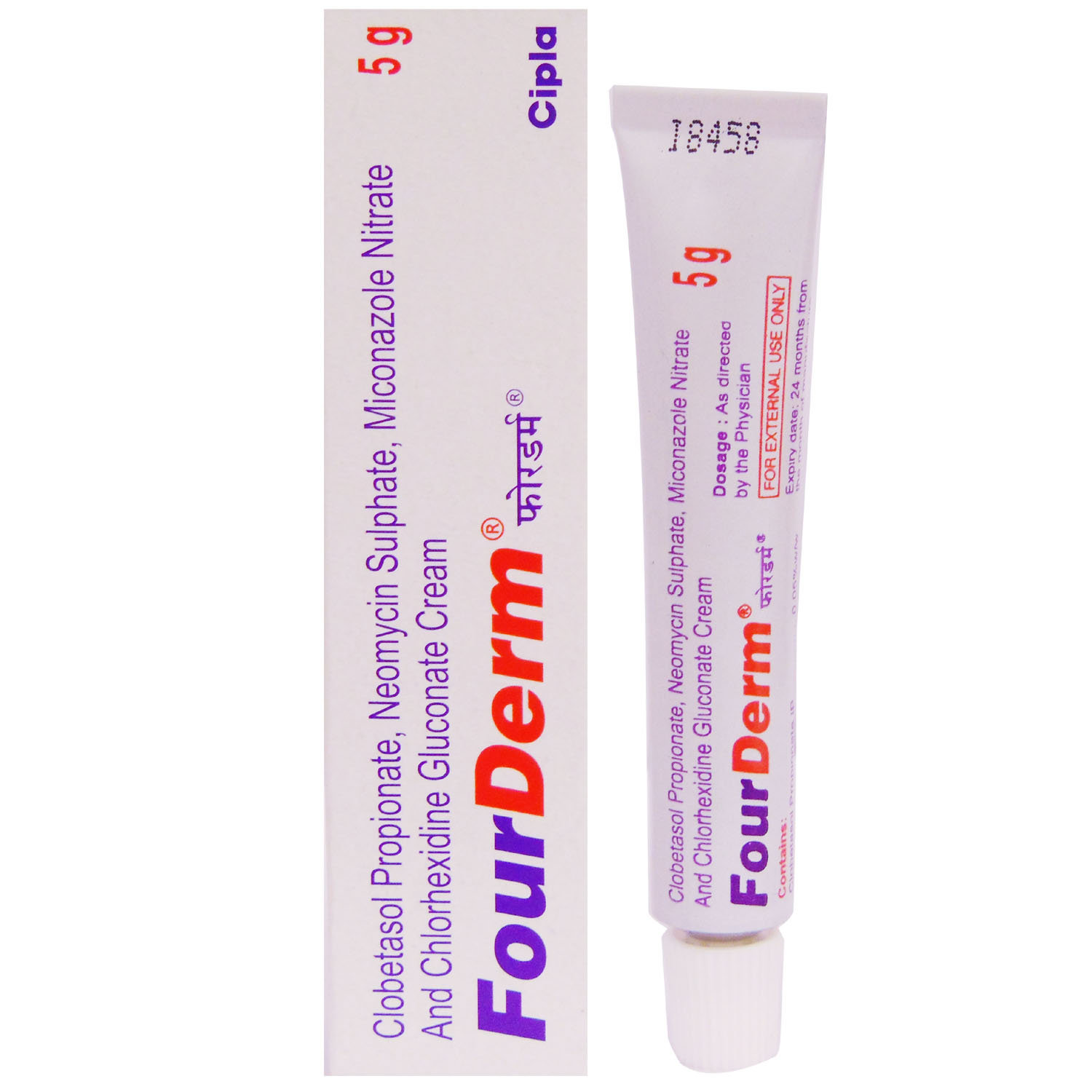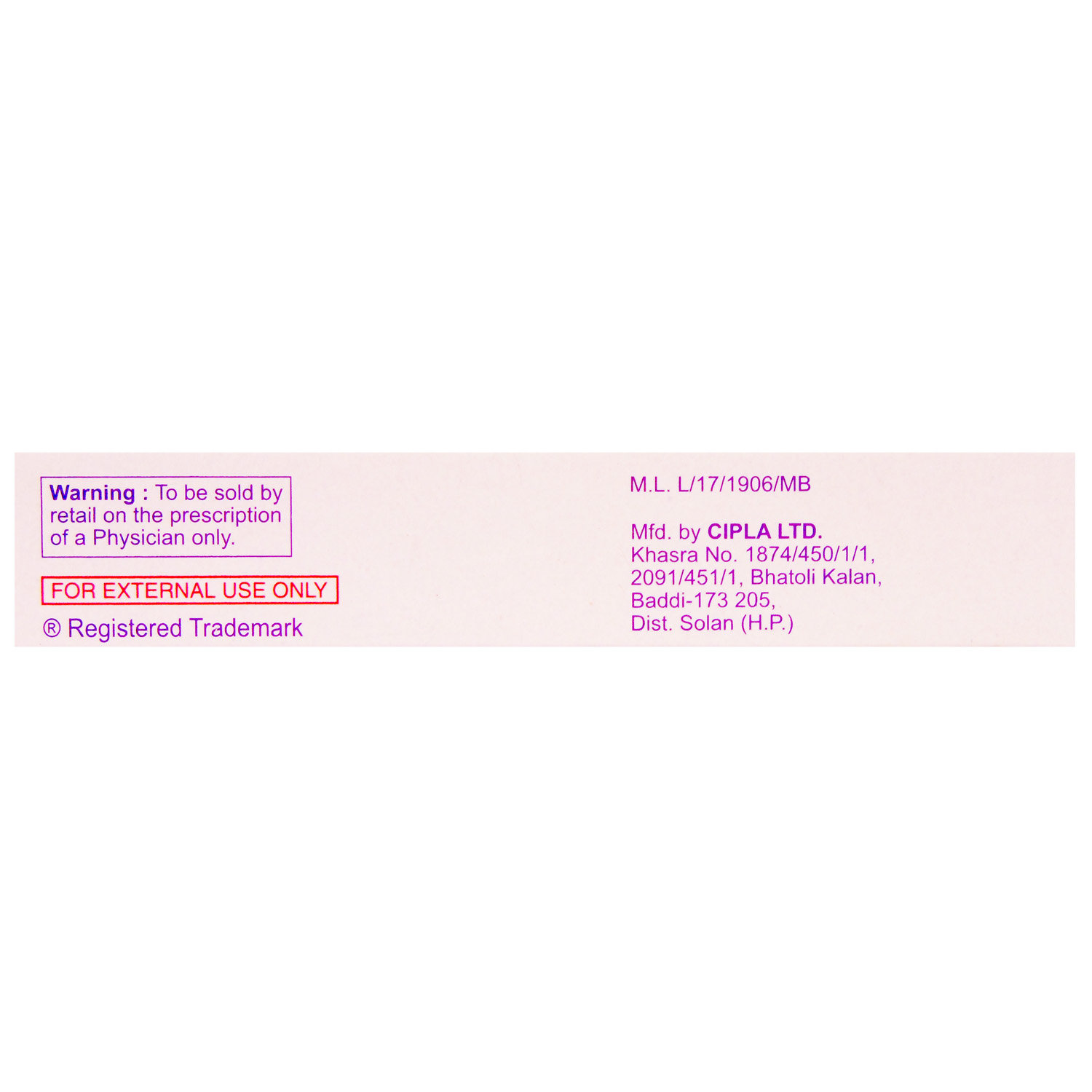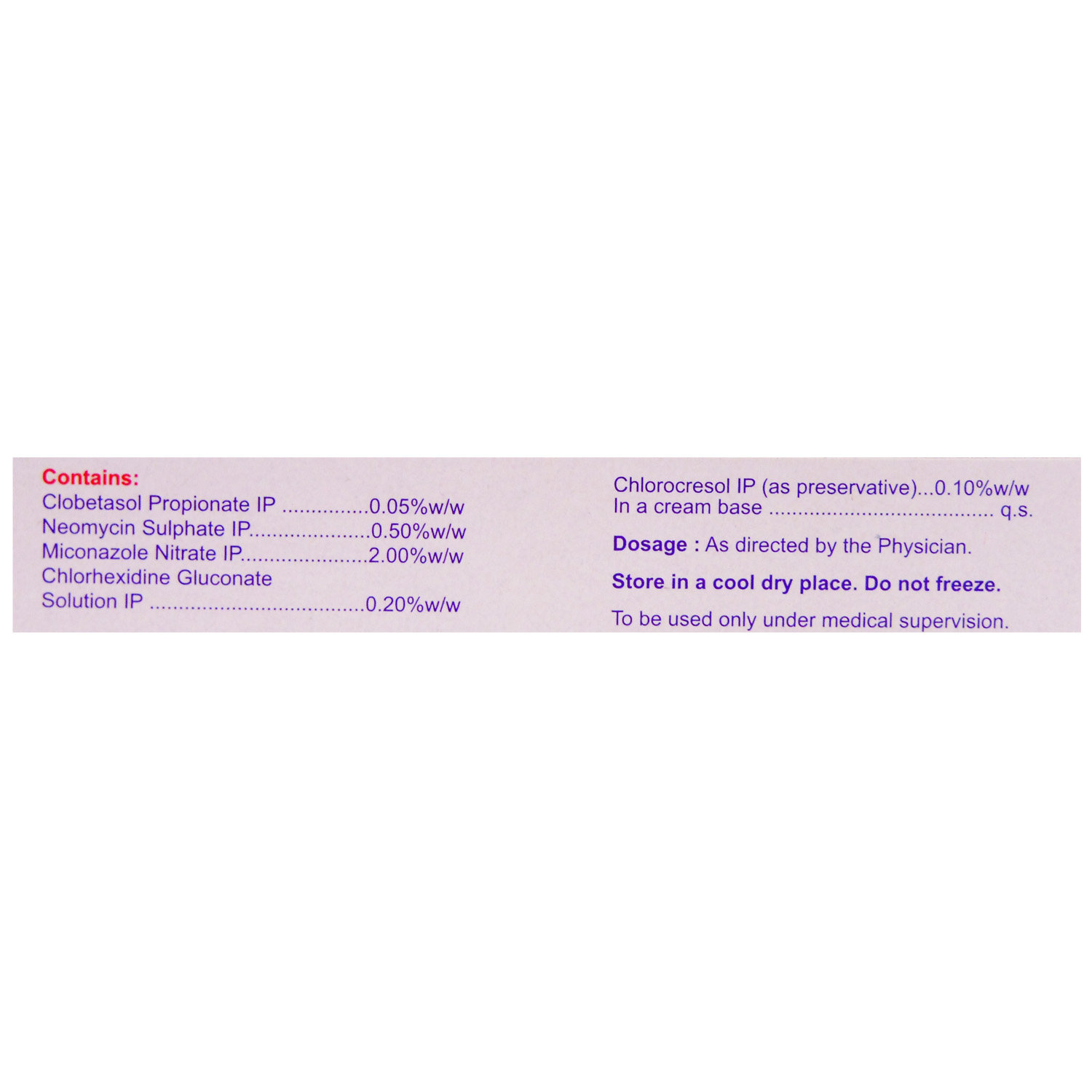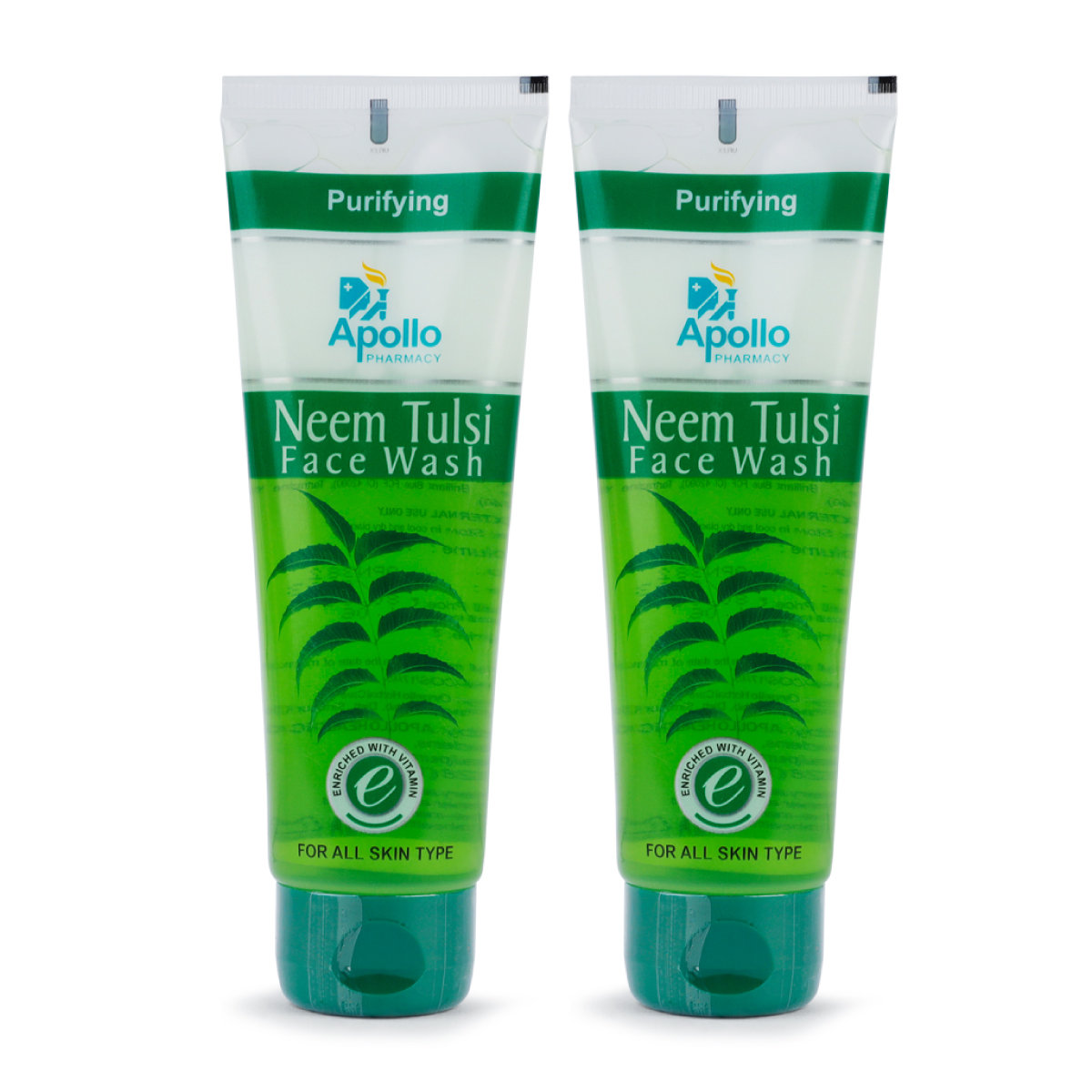Fourderm Cream 5 gm



MRP ₹64
(Inclusive of all Taxes)
₹9.6 Cashback (15%)
know your delivery time
Provide Delivery Location
Manufacturer/Marketer :
Consume Type :
Expires on or after :
Return Policy :
Selected Pack Size:5 gm
5 gm ₹57.6
(₹11.52 per gm)
In Stock
20 gm ₹155.3
(₹7.77 per gm)
In Stock
15 gm ₹124.2
(₹8.28 per gm)
In Stock
10 gm ₹99.5
(₹9.95 per gm)
In Stock

Secure Payment

Trusted by 8 Crore Indians

Genuine Products
Therapeutic Class
Country of origin
Manufacturer/Marketer address
Author Details
We provide you with authentic, trustworthy and relevant information
Disclaimer
Alcohol
Safe if prescribed
Interaction of Fourderm Cream 5 gm with alcohol is unknown. Please consult a doctor before consuming alcohol while using Fourderm Cream 5 gm.
Pregnancy
Consult your doctor
The safety of Fourderm Cream 5 gm in pregnant women is unknown. Therefore, it is given to pregnant women only if the doctor thinks the benefits outweigh the risks.
Breast Feeding
Consult your doctor
It is unknown whether Fourderm Cream 5 gm is excreted in human milk. Please consult a doctor before using Fourderm Cream 5 gm while breastfeeding.
Driving
Safe if prescribed
Fourderm Cream 5 gm usually does not affect your ability to drive or operate machinery.
Liver
Consult your doctor
If you have any concerns regarding the use of Fourderm Cream 5 gm in patients with Liver problems, please consult a doctor.
Kidney
Consult your doctor
If you have any concerns regarding the use of Fourderm Cream 5 gm in patients with Kidney problems, please consult a doctor.
Children
Safe if prescribed
The safety of Fourderm Cream 5 gm in children is unknown. Please consult a doctor.
About Fourderm Cream 5 gm
Fourderm Cream 5 gm belongs to a class of dermatological medication used to treat skin infections. It helps reduce swelling, itching and redness occurring due to certain skin infections caused by bacteria and fungus. Fungal infection is a skin disease in which a fungus attacks the tissue and causes infection. Fungal infections may be contagious (spread from one person to another). Bacterial infection is a condition in which harmful bacteria grows in the body and cause infection. It can infect any part of the body and multiply very quickly.
Fourderm Cream 5 gm is a combination of four drugs, namely: Chlorhexidine gluconate (antiseptic), Clobetasol (corticosteroid), Miconazole (antifungal) and Neomycin (antibiotic). Chlorhexidine gluconate works by killing the micro-organisms and thus, prevents infection. Clobetasol inhibits the release of certain chemical messengers in the body that cause redness, itching and swelling. Miconazole works by damaging the fungal cell membranes and killing fungi. Neomycin works by inhibiting the production of essential proteins necessary for bacteria to grow, multiply and increase in numbers. Thereby, Fourderm Cream 5 gm helps treat skin infections.
Fourderm Cream 5 gm is only for external use. You are advised to use Fourderm Cream 5 gm for as long as your doctor has prescribed it based on your condition. Some people may experience dry skin, skin rash, thinning of the skin, itching, swelling, redness or burning sensation at the site of application. Most of these side effects of Fourderm Cream 5 gm do not require medical attention and gradually resolve over time. However, if the side effects persist or worsen, please consult your doctor.
If you are allergic to Fourderm Cream 5 gm or any other medicines, please tell your doctor. If you are pregnant or a nursing mother, it is advised to consult a doctor before using Fourderm Cream 5 gm. Fourderm Cream 5 gm should be used with caution in infants below 2 months old if prescribed by a doctor as it may cause chemical burns or severe irritation on babies. Do not use Fourderm Cream 5 gm in more than prescribed doses or for a prolonged time as it may cause adverse effects. Avoid using Fourderm Cream 5 gm on open skin wounds, deep cuts or scrapes. Do not wrap or cover the treated area with bandages unless advised by your doctor.
Uses of Fourderm Cream 5 gm
Medicinal Benefits Mweb
Key Benefits
Fourderm Cream 5 gm contains Chlorhexidine gluconate, Clobetasol, Miconazole and Neomycin. Chlorhexidine gluconate is an antiseptic that kills microorganisms and prevents infection. Clobetasol is a corticosteroid that works by acting inside skin cells and inhibits the release of certain chemical messengers in the body that cause redness, itching and swelling. Miconazole is an antifungal that works by damaging the fungal cell membranes and killing fungi. Neomycin is an antibiotic that works by inhibiting the production of essential proteins necessary for bacteria to grow, multiply and increase in numbers. Thereby, killing the bacteria. Thus, Fourderm Cream 5 gm helps in treating skin infection.
Directions for Use
Side Effects of Fourderm Cream 5 gm
- Dry skin
- Skin rash
- Thinning of the skin
- Itching, swelling, redness or burning sensation at the site of application
Drug Warnings
If you are known to be allergic to Fourderm Cream 5 gm or any other medicines, please tell your doctor. If you are pregnant or a nursing mother, it is advised to consult a doctor before using Fourderm Cream 5 gm. Fourderm Cream 5 gm should be used with caution in infants below 2 months old if prescribed by a doctor as it may cause chemical burns or severe irritation on babies. Do not use Fourderm Cream 5 gm in more than prescribed doses, or for a prolonged time as it may cause adverse effects. Avoid using Fourderm Cream 5 gm on open skin wounds, deep cuts or scrapes. Do not wrap or cover the treated area with bandages unless advised by your doctor. Do not swallow Fourderm Cream 5 gm. In case of accidental swallowing, contact a nearby poison control centre or consult a doctor immediately. If you have adrenal gland or liver problems and any skin infection, inform your doctor before using Fourderm Cream 5 gm.
Drug-Drug Interactions
Drug-Drug Interactions
Login/Sign Up
Drug-Food Interactions
Drug-Food Interactions
Login/Sign Up
Drug-Diseases Interactions
Drug-Diseases Interactions
Login/Sign Up
Habit Forming
Special Advise
Please consult a dermatologist if your skin infection persists for more than 1 month.
Diet & Lifestyle Advise
- Regularly change your socks and wash your feet. Avoid shoes that make your feet sweaty and hot.
- In wet places such as changing rooms and gym showers, don’t walk barefoot. Wear flip-flops or sandals to prevent fungal infections.
- Do not scratch the affected area of the skin as it can spread the infection to other body parts.
- Avoid sharing towels, combs, bedsheets, shoes or socks with others to prevent the spread of infection.
- Wash your bed sheets and towels regularly.
- Eat foods rich in quercetin (a flavonoid) such as apples, cherry, broccoli, spinach and blueberries.
- Consuming food rich in probiotics helps in developing the immune system against allergies.
- Limit intake of food that might trigger allergies, such as dairy products, soy, eggs, and nuts.
- Avoid consumption of foods with excess sugar as it may flare-up inflammation.
- Include fruits, vegetables, whole grains, healthy fats and fish in your diet.
- Avoiding getting in contact with harsh soaps, detergents and rough fabrics.

Have a query?
Buy best Skin Disorders products by
Sun Pharmaceutical Industries Ltd
Glenmark Pharmaceuticals Ltd
Cipla Ltd
Oaknet Healthcare Pvt Ltd
Ranbaxy Laboratories Ltd
Salve Pharmaceuticals Pvt Ltd
Torrent Pharmaceuticals Ltd
Dr Reddy's Laboratories Ltd
Karlin Pharmaceuticals & Exports Pvt Ltd
Merck Ltd
Micro Labs Ltd
Abbott India Ltd
Alkem Laboratories Ltd
East West Pharma India Pvt Ltd
Intas Pharmaceuticals Ltd
Leeford Healthcare Ltd
Mohrish Pharmaceuticals Pvt Ltd
P and P Dermaceuticals Pvt Ltd
Surecare Pharma Pvt Ltd
Wockhardt Ltd
Canixa Life Sciences Pvt Ltd
Geno Pharmaceuticals Pvt Ltd
GlaxoSmithKline Pharmaceuticals Ltd
Apex Laboratories Pvt Ltd
Dabur India Ltd
Fourrts India Laboratories Pvt Ltd
Fulford India Ltd
Indi Pharma Pvt Ltd
Lupin Ltd
Mankind Pharma Pvt Ltd
Monichem Healthcare Pvt Ltd
Novartis India Ltd
NuLife Pharmaceuticals
Saf Fermion Ltd
Wallace Pharmaceuticals Pvt Ltd
A. Menarini India Pvt Ltd
Acme Corporation
Ajanta Pharma Ltd
Alembic Pharmaceuticals Ltd
An Pharmaceuticals Pvt Ltd
Apple Therapeutics Pvt Ltd
Biocon Ltd
Comed Chemicals Ltd
Dwd Pharmaceuticals Ltd
Dynamic Techno Medicals
E Merck India Ltd
H&H Pharmaceuticals Ltd
Hegde & Hegde Pharmaceutica Llp
Kaizen Pharmaceuticals Pvt Ltd
Klm Laboratories Pvt Ltd
Kremoint Pharma Pvt Ltd
Liva Health Care Ltd
Macleods Pharmaceuticals Ltd
Menarini India Pvt Ltd
Shalaks Pharmaceuticals Pvt Ltd
Stedman Pharmaceuticals Pvt Ltd
Unichem International
Yash Pharma Laboratories Pvt Ltd
Zee Laboratories Ltd
Adonis Laboratories Pvt Ltd
Alive Pharmaceutical Pvt Ltd
Amwill Healthcare Pvt Ltd
Apple Pharmaceuticals
Athens Labs Ltd
Aventis Pharma
Bayer Corporation
Bayer Pharmaceuticals Pvt Ltd
Bellissa Pharmaceuticals Pvt Ltd
Biochem Pharmaceutical Industries Ltd
Bion Therapeutics (I) Pvt Ltd
Blue Cross Laboratories Pvt Ltd
Cadila Healthcare Ltd
Cadila Pharmaceuticals Ltd
Centaur Pharmaceuticals Pvt Ltd
Concept Pharmaceuticals Ltd
Corona Remedies Pvt Ltd
Cosme Healthcare
DR Johns Lab Pharma Pvt Ltd
Dan Laboratories
Dermocare Laboratories Gujarat Llp
Dollar Company Pvt Ltd
Elder Pharmaceuticals Ltd
Emcee Pharmaceuticals (P) Ltd
Eskon Pharma
FDC Ltd
Fem Care Pharma Ltd
Finn Cosmeceutical Pvt Ltd
Galaxus Pharmaceuticals
Galaxy Biotech
Galderma India Pvt Ltd
Gary Pharmaceuticals Pvt Ltd
Gland Pharma Ltd
Gopish Pharma Ltd
Grefith Life Sciences Pvt Ltd
Ind Swift Laboratories Ltd
Indus Life Sciences Pvt Ltd
Insula Pharmaceuticals Pvt Ltd
Intermed Pharma Pvt Ltd
Intra Labs India Pvt Ltd
Janssen Pharmaceuticals Pvt Ltd
Customers Also Bought


_0.jpg?tr=q-85)


